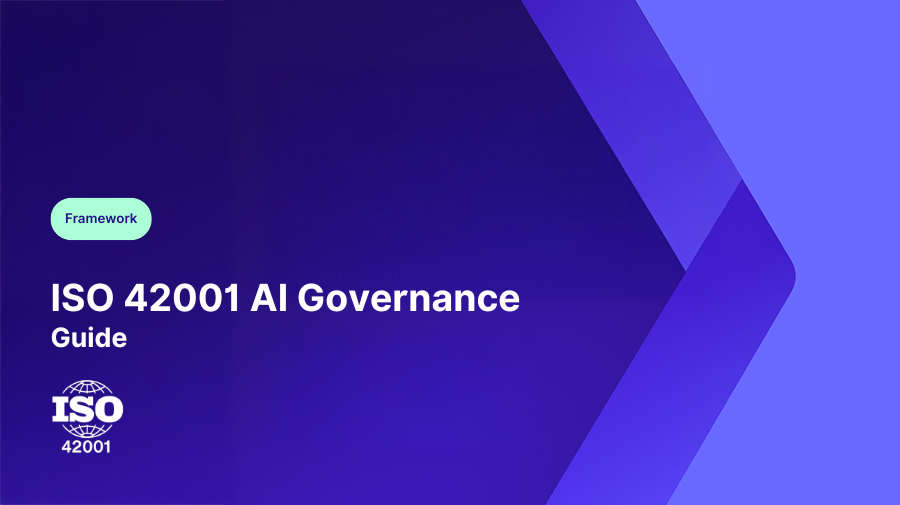Plan
- Define AIMS scope, stakeholders, objectives.
- Context analysis (use cases, impact horizons).
- Risk criteria incl. bias, drift, misuse, safety.
- Governance roles and decision rights.

Artificial Intelligence is transforming every industry: from healthcare diagnostics to financial modeling, but with that transformation comes new and evolving governance challenges. ISO 42001 is the world’s first international management standard designed to bring accountability, structure and trust to how organizations are deploying AI.
ISO 42001 Artificial Intelligence Management System (AIMS) is an international standard published by the International Organization for Standardization (ISO) in December 2023.
It establishes a management system framework (much like ISO 27001 for information security) but tailored specifically to AI system lifecycle governance, ensuring responsible design, deployment, monitoring, and continual improvement.
ISO 42001 defines requirements for organizations that develop, procure, or use AI systems, focusing on:
Transparency: documenting system purpose, training data provenance, and explainability.
Accountability: assigning roles and responsibilities for AI oversight.
Risk management: identifying, assessing, and mitigating AI-specific risks such as bias or drift.
Human oversight: ensuring appropriate human control in AI-driven decisions.
Sustainability and ethics: considering social impact, fairness, and environmental effects.
Without structured governance, AI initiatives can expose organizations to ethical, regulatory and reputational risks. Recent moves from the EU AI Act, the White House Executive Order on AI, and NIST’s AI Risk Management Framework show that governments expect verifiable oversight. Common AI governance challenges include:
AI governance frameworks like ISO 42001 establish a common language across compliance, risk, data science, and leadership; embedding responsible AI practices into daily operations rather than treating them as afterthoughts.
This standard is developed around the Plan > Do > Check > Act (PDCA) cycle, enabling continuous improvement of AI governance, with key clauses including:
Implementing ISO 42001 follows a similar path to other ISO management systems, but this time tailored specifically for AI:
Tip: If you already maintain ISO 27001 or ISO 9001 certification, many governance and audit mechanisms can be extended to your AIMS and reduce implementation efforts.
These frameworks are complementary. NIST AI RMF helps identify and manage AI risks, while ISO 42001 embeds those risk management activities into a repeatable, auditable management system.
Ready to explore ISO 42001 readiness for your organization? Book a Demo to see how Complyance supports AI governance and certification alignment.
Is ISO 42001 mandatory? No. It’s voluntary, but it provides a globally recognized benchmark that helps organizations prepare for upcoming AI regulations (EU AI Act, U.S. state laws, etc.).
Who needs ISO 42001? Organizations developing, deploying, or procuring AI systems; particularly in regulated sectors like healthcare, finance, and critical infrastructure.
Can ISO 42001 integrate with existing frameworks? Yes. It can align with ISO 27001 (security), ISO 27701 (privacy), and ISO 9001 (quality) for unified governance.
How long does certification take? Typically 6 to 12 months, depending on readiness, documentation maturity, and audit complexity.
